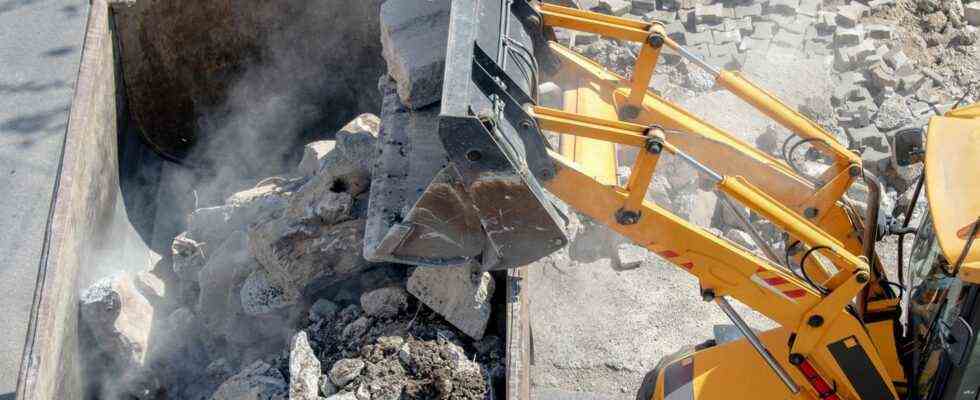Calcium carbonate concrete
Building houses from exhaust fumes – eco-concrete uses recycled cement and CO2
New material is obtained from old concrete.
© Georgemuresan / Getty Images
Reverse gear on climate change. Researchers from Tokyo have developed a climate-neutral building material that binds CO2 from the air.
The whole world is talking about fossil fuels, less well known is the share that the construction industry has in CO2 emissions. Concrete is one of the biggest climate killers. Cement, the main component of concrete, is believed to be responsible for eight percent of global CO2 emissions.
People are therefore feverishly looking for methods to replace the traditional production of concrete. The CO2 pollution arises from the use of calcium in cement production. This calcium is obtained by burning limestone. CO2 emissions can already be reduced by using a higher proportion of recycled concrete from demolition work.
Inspired by fossils
Now a new method has been presented in the journal “Journal of Advanced Concrete Technology” that solves several problems at once. The new process was inspired by the process that creates fossils. With them, calcium carbonate accumulates over a long period of time in the places where organic material was lying. Researchers at the University of Tokyo have developed a calcium carbonate concrete. The material is made from old concrete and CO2. The CO2 is technically separated from exhaust gases or the atmosphere.
Holes, water damage, gas leaks: this is how a construction company shocks its customers
8 images
“Our concept is to extract the calcium from old concrete that would otherwise end up in the trash,” says Professor Ippei Maruyama, one of the study’s authors. “We combine the material with carbon dioxide from industrial exhaust gases or even from the air. And we achieve this process at much lower temperatures than those currently used to extract calcium from limestone.” Lower temperatures mean: less energy consumption.
Not the only new development
The researchers’ novel calcium carbonate concrete is very strong and can be used as a building material. However, it has not yet reached the resilience of real concrete, so that it can only be used in small buildings. The team at the University of Tokyo is now working on further developing the material. “It is exciting to make progress in this area, but there are still many challenges to overcome,” said Professor Takafumi Noguchi, one of the authors.
“In addition to increasing the strength and size limitation of calcium carbonate concrete, it would be good if we could further reduce the energy consumption of the production process. However, we hope that carbon-neutral calcium carbonate concrete will prevail in the coming decades and be one of the solutions to climate change.”
Removing CO2 from the atmosphere with technical systems is the most elegant way of combating climate change, because CO2 is permanently removed from the atmosphere here. However, if these methods were to be used on a large scale, the question arises as to where the material obtained in this way should go. In simple terms, one can say: The same amount is produced here that was previously burned as coal or oil. It is therefore appealing to use the material for building so that it does not have to be heaped up into gigantic heaps.
The researchers from Tokyo are not alone in their experiments. Just recently, a team from the Technical University of Dresden announced that they were developing the world’s first building made of carbon concrete. Their process is intended to reduce carbon emissions by up to 50 percent.



